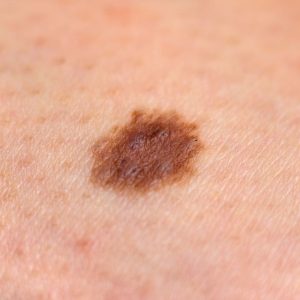 As experienced dermatologists, one of our top priorities is helping patients recognize early warning signs of melanoma, the most serious form of skin cancer. Melanoma can be deadly if not caught early, but it is highly treatable when detected in time. That’s why we emphasize the ABCDE rule, a simple yet powerful guide to spotting suspicious moles or skin lesions.
As experienced dermatologists, one of our top priorities is helping patients recognize early warning signs of melanoma, the most serious form of skin cancer. Melanoma can be deadly if not caught early, but it is highly treatable when detected in time. That’s why we emphasize the ABCDE rule, a simple yet powerful guide to spotting suspicious moles or skin lesions.
A for Asymmetry
Look closely at any mole or dark spot on your skin. If one half looks different from the other half in shape or color, this asymmetry can be a warning sign. Normal moles are usually symmetrical, meaning if you draw a line through the center, both sides will look similar. Melanomas often grow unevenly.
B for Border
Healthy moles tend to have smooth, even edges. If you notice that the borders of a mole are ragged, scalloped, blurry, or irregular, it could indicate melanoma. A mole with fuzzy or poorly defined edges is worth a closer look by a dermatologist.
C for Color
Variation in color within a single mole is another red flag. Melanomas may contain multiple shades of brown, black, tan, and sometimes red, white, or blue. If you see a mole that is not a uniform color or has dark spots within a lighter area, that should prompt an evaluation.
D for Diameter
While melanomas can be smaller, a general rule is that moles larger than 6 millimeters (about the size of a pencil eraser) deserve attention. If a mole is growing in size or is bigger than most of your other moles, it should be checked.
E for Evolving
Perhaps the most important factor is change. Any mole that is evolving, growing, changing shape, color, or texture, or if they are presenting with symptoms such as itching, bleeding, or tenderness requires prompt medical assessment.
Many patients come in concerned about moles that look different or new spots that appear. We encourage everyone to perform regular self-checks at home and to seek professional skin exams annually or more often if you have risk factors such as fair skin, family history, or prior skin cancers.
In our Hollywood dermatology practice, we use specialized tools that allow us to examine moles with great detail. Dermoscopy, for example, helps to see magnified details of the skin and distinguish benign from suspicious lesions. If we find anything concerning, we recommend a biopsy to confirm whether the lesion is melanoma or another form of skin cancer.
Routine skin cancer screening and early detection is critical because thin melanomas that are caught early can often be cured with surgical removal alone. Deeper or more advanced melanomas may require additional treatments, including surgery to check lymph nodes and sometimes medical oncology for systemic therapies.
Melanoma can be scary, but is manageable with awareness and proactive skin care. Use the ABCDEs as your guide, protect your skin from sun damage, and make annual skin checks part of your health routine. Remember, your skin is your largest organ and deserves the same vigilance as other parts of your body.









